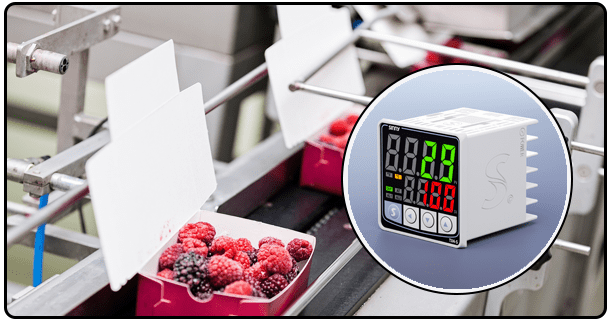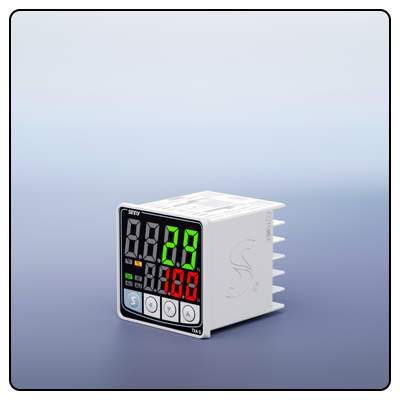Step-by-Step Guide to Using a Digital Temperature Controller | Expert Tips
Our comprehensive step-by-step guide reveals everything you need to know to effectively use digital temperature controllers - installation, configuration, operation and maintenance to achieve precise temperature regulation with optimal performance.
1. Introduction
Digital temperature controllers have become essential tools in various industries, providing precise temperature regulation of processes, products and environments. Proper usage of such controllers is necessary to ensure accuracy, safety and efficiency; thus, this guide offers a step-by-step approach to digital temperature controllers while emphasising correct installation, configuration and maintenance practices.
2. Understanding the Fundamentals
A digital temperature controller is an electronic device that maintains a desired temperature within an established range. It contains key components like sensors, control units and output devices that work harmoniously to monitor and regulate accurate temperatures.
3. Preparation Before Use
Safety Precautions:
Before using a digital temperature controller, all safety precautions must be observed. Always switch off power before installing or removing components to avoid electrical shock; ensure adequate ventilation; prevent the exposure of the controller to moisture, which can compromise its integrity and compromise its safety; ensure the proper ventilation when possible and do not place it in direct sunlight or other direct sources; these are just a few safety considerations you should keep in mind before operating one!
Gather Necessary Tools:
Certain tools will be required to install and set up a digital temperature controller. These might include screwdrivers, wire strippers, multimeters and mounting hardware - having these available will make installation much smoother!
4. Installation Process
Mounting the Controller:
Attractively Mount it: While mounting your controller, locate an appropriate location that's easily accessible while away from heat sources or moisture sources. Secure it using the mounting hardware to remain steady and in an ideal spot for proper function.
Connect the Sensors:
Digital temperature controllers utilise various sensors, such as thermocouples and RTDs. Following manufacturer specifications, you can connect each type to its respective controller according to instructions; place sensors accurately representing the temperature of a controlled environment before tightening connections for secure wiring connections that do not become loose over time.
Wiring the Controller:
Could you attach the power supply and output devices to the controller by following the wiring diagram provided by its manufacturer to ensure proper connections and double-check all connections to ensure safety and prevent potential malfunctions?
Setting Up the Controller
Powering On the Device:
After installing and wiring up your controller correctly, power on your device. Conduct initial tests to ensure everything functions as it should; look for error messages or abnormal readings that might suggest installation issues.
Configuring the Setpoint:
You can select your target temperature on the controller using its control panel to input its setpoint - that target temperature that you intend to maintain - before becoming familiar with its functions to make precise adjustments.
Calibrating Sensors:
Calibration is key for maintaining accurate temperature readings from controllers. Following manufacturer guidelines to calibrate sensors will ensure maximum precision. Calibration involves comparing sensor readings against an established standard and making necessary adjustments as part of this process. Regular calibration ensures your controller provides reliable temperature measurements.
5. Operating the Controller
Monitoring Temperature:
d for optimal use of the controller, monitor temperature readings regularly displayed on it to ensure they remain within desired parameters and adjust any settings necessary to reach the setpoint.
Utilise Advanced Features:
Modern digital temperature controllers offer advanced features like programmable setpoints, alarms, and notifications that you can utilise to increase functionality and expand usage. Set multiple setpoints at different times throughout the day or use alarms as notifications of temperature deviations if possible.
Maintenance and Troubleshooting Services.
Regular Maintenance:
For optimal controller operation, perform routine maintenance such as cleaning the device, inspecting for wear or damage signs, ensuring all connections are secure, etc. Regular inspection helps avoid unexpected failures while prolonging its life and will extend its useful life significantly.
Common Issues and Solutions:
Be ready to address common problems associated with digital temperature controllers, such as sensor malfunction, wiring issues or calibration errors, quickly using manufacturer troubleshooting guides as guides of reference if needed for assistance; in any event, professional help should always be sought immediately to avoid further complications.
Applications of Digital Temperature Controllers
Industrial Applications: Digital Temperature Controllers Are Widely Utilized: Digital temperature controllers have become ubiquitous within industrial settings like manufacturing, HVAC systems and food processing operations - precisely controlled temperatures are essential in maintaining product quality while guaranteeing safety and enhancing energy efficiency.
Consumer Applications:
Digital temperature controllers can be found in household appliances like refrigerators, ovens and water heaters to maintain optimal functioning while meeting desired temperatures for maximum comfort and convenience. These controllers ensure efficient use by maintaining an ideal setpoint temperature that maximises user comfort and convenience.
6. Conclusion
Utilizing a digital temperature controller involves several crucial steps, from installation and configuration to operation and maintenance. By following this guide step-by-step, users can ensure accurate and safe temperature regulation. Proper use maximises performance and extends its lifespan; regular maintenance checks will keep optimal functionality alive - with this approach, digital temperature controllers provide reliable yet precise temperature regulation across various applications.
- Essential Safety Tips for Temperature Control Systems | Expert Guide
- Common Issues and Solutions in Temperature Control Systems: An In-depth Guide























